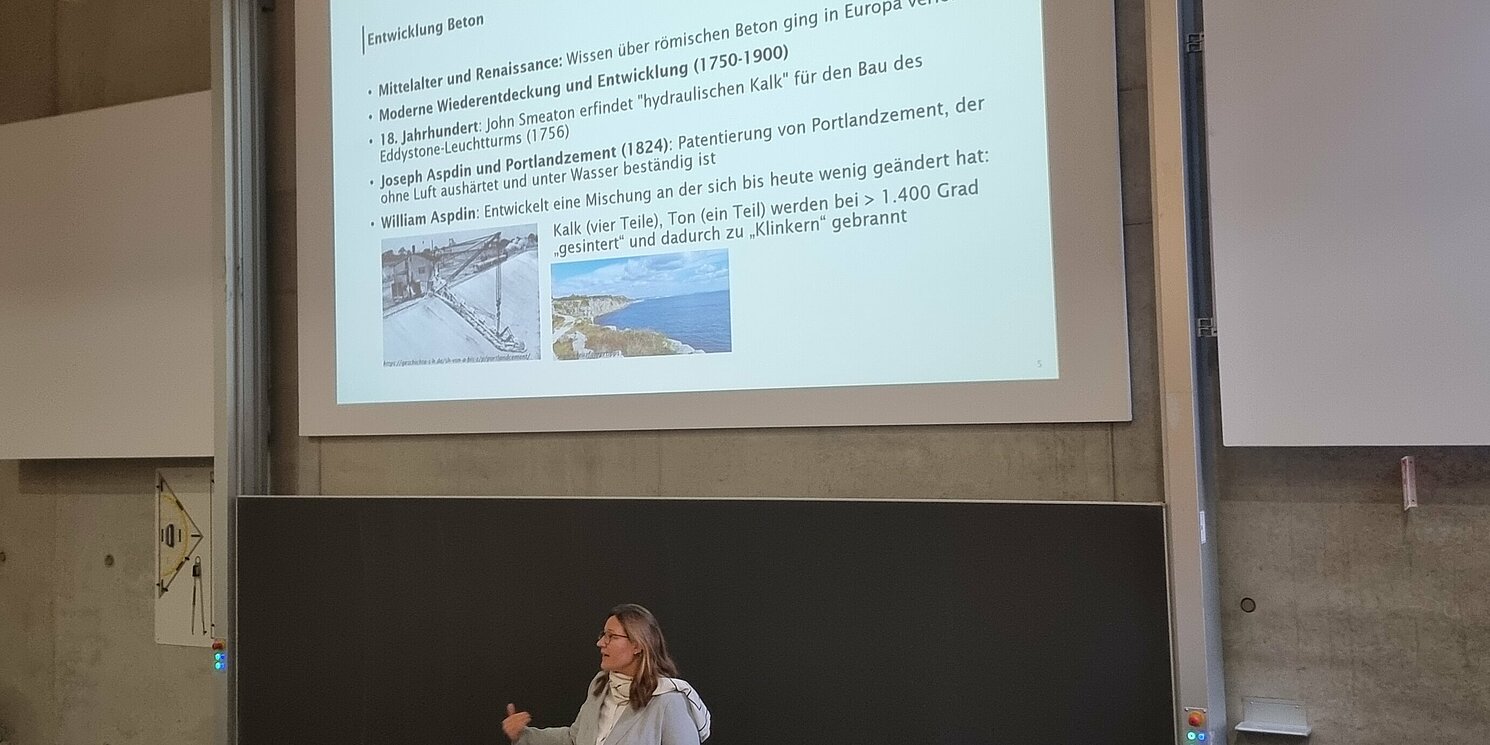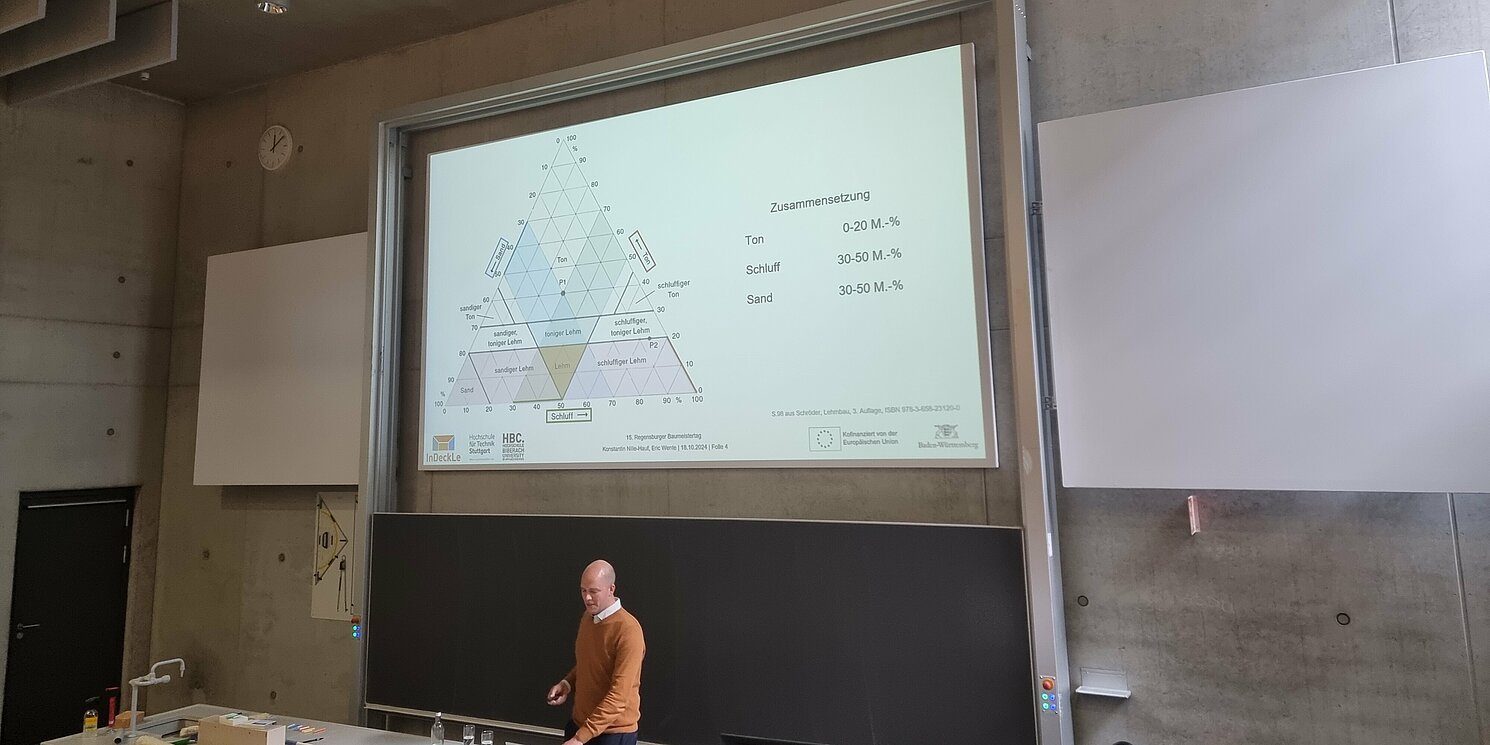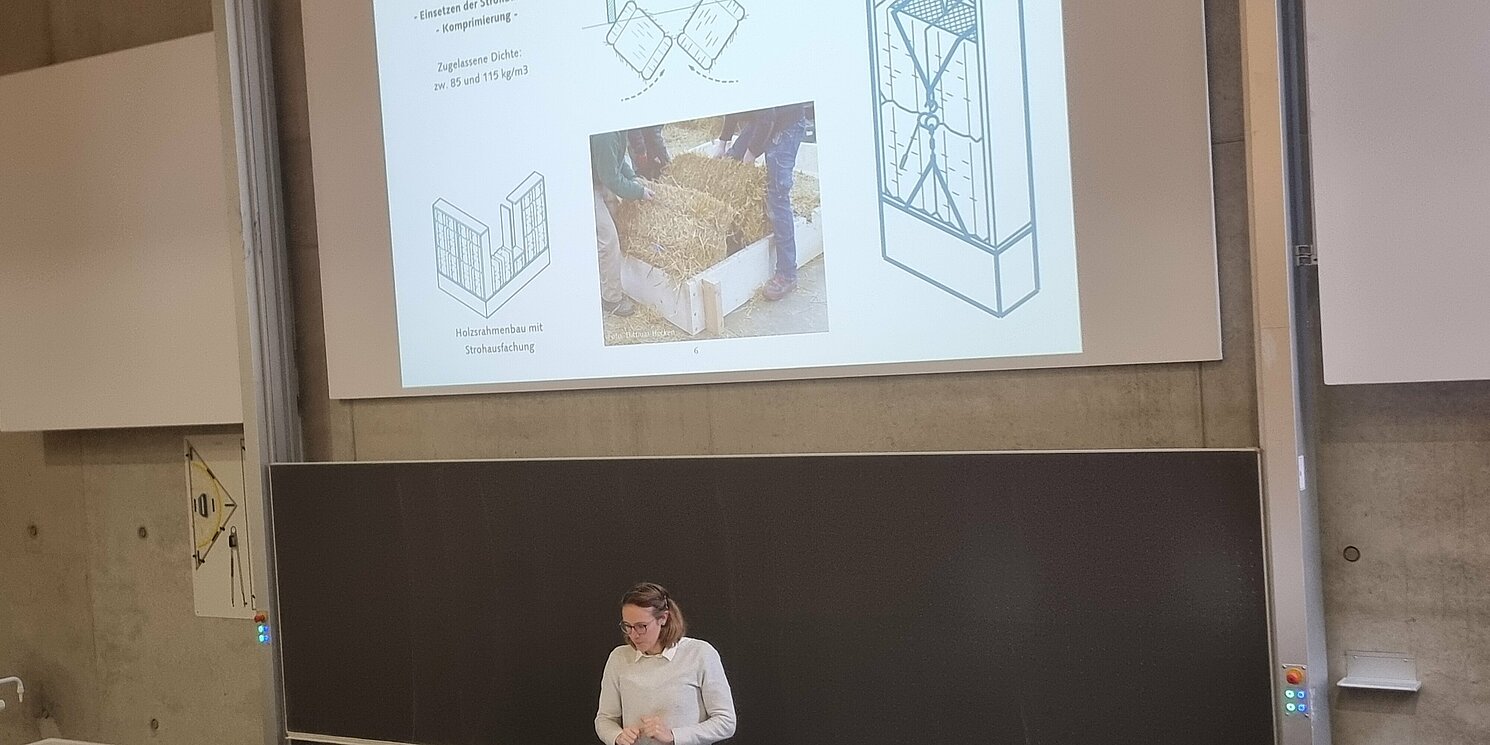Consistency and change - in the construction industry, these two approaches are not contradictory. On the contrary, they inspire each other. The speakers at the 15th Regensburg Master Builders' Day on Friday, 18 October 2024, bridged the gap between traditional building materials and innovative technologies.
The Master Builders' Day was once again organised by the Association of German Master Builders, Architects and Engineers Regensburg. District Chairwoman Dipl.-Ing. Silke Bausenwein took the opportunity to draw attention to the upcoming 100th anniversary of the district group next year. Prof. Dipl.-Ing. Andreas Ottl, Dean of the Faculty of Civil Engineering at OTH Regensburg, welcomed the guests and was particularly pleased that two of the university's graduates were among the experts presenting their theses. Eva-Maria Mader and Corinna Kainz erected a true-to-scale wooden model of the nave roof truss of Regensburg Cathedral and formulated a hypothesis about the erection process.
The event was moderated by Wolfgang Kugler, Head of Engineering at the BDB Regensburg.
Charlotte Thiel, Head of the Laboratory for Building Materials and the Laboratory for Concrete Technology at OTH Regensburg, gave an entertaining overview of the development of concrete as a building material in the first lecture of the day. As she emphasised, the ecological footprint of the construction industry is immense. Around 55 per cent of the waste produced in Germany is caused by construction and demolition waste. 40 per cent of greenhouse gas emissions are attributable to the construction industry. As Thiel emphasised, other industrial sectors have quickly improved in the areas of sustainability and energy saving.
Although concrete itself does not have high CO2 values, it is the most widely used material on earth after water. However, more efficient components and the decarbonisation of concrete construction methods can reduce the environmental impact immensely.
Architect Dipl. Ing. Heike Nickel and architect Dipl. Ing. Ralf Bernhardt then gave a field report on the planning, processing and use of thermal insulation concrete. They also pointed out the problems that can arise with this type of construction.
The two architects Timothy Allen and Ronan Crippa from Grabs/Zurich presented the Gässlihaus, one of the oldest and few largely original houses in the Werdenberg region. The log building should actually have been demolished. In order to keep it in use, the 350-year-old house was dismantled into its individual parts and rebuilt at a new location in the village and extended with a new building made of rammed earth, hemp, natural stone and solid wood, natural stone and solid wood. The building materials can all be returned to the cycle at the end, resulting in a house without waste.
The two master's students Corinna Kainz and Eva Mader presented their master's thesis, which focussed on the nave roof truss of Regensburg Cathedral. In order to be able to reproduce the installation process of the roof truss, a wooden model was built on a scale of 1:20 and all the details of the roof truss, including the leaf joints, were recreated. The master's thesis received a very good grade and was honoured with the Science Award 2024 by the Association of Friends of OTH Regensburg.
Researchers Konstantin Nille-Hauf and Eric Wente presented the possible applications of earth in (composite) floor constructions. Clay earth as a building material is playing an increasingly important role in sustainable construction. The InDeckLe research project has set itself the task of using earth as a load-bearing element in ceiling constructions.
Due to the increasing scarcity of raw materials, price increases and the climate crisis, straw is also increasingly being utilised and researched as a building material. Katharina Elert, research assistant at Bauhaus-Universität Weimar, explained that straw bales are already being used in various construction methods. In the ‘StrohGold’ research project, however, new building materials based on straw are also being developed, true to the motto ‘from bale to straw block’.






